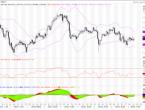EUR/USD
1.15637
0.144%
Gold
4003.94
0.678%
Oil
59.676
0.470%
USD/JPY
153.426
0.241%
GBP/USD
1.31627
0.193%
GBP/JPY
201.955
0.452%
November 9th - According to Japans TBS News, a 5.6-magnitude earthquake struck off the eastern coast of Honshu, Japan, at 6:28 PM local time on the 9th, with a focal depth of 10 kilometers. The epicenter was located off the coast of Sanriku, and Morioka City in Iwate Prefecture experienced noticeable tremors with an intensity level of 3. A 6.7-magnitude earthquake had just struck the same area at approximately 5:03 PM local time on the 9th, triggering a tsunami. According to the latest observations, the tsunami has reached several locations in Iwate Prefecture, including Miyako, Kuji Port, and Ofunato. No casualties have been reported so far.November 9th - This morning, the Navys 83rd Fleet, consisting of the warships Qi Jiguang and Yimengshan, successfully completed its long-range training and visit mission and returned smoothly to Dalian. At 10:00 AM, the two warships slowly docked, and officers, sailors, and their families came to the pier to welcome them. The 83rd Fleet, composed of the Qi Jiguang and Yimengshan, set sail on September 26th, navigating the Yellow Sea, East China Sea, and South China Sea. During the voyage, it organized a ship open day in Hong Kong and visited Cambodia, Thailand, and Singapore, covering a total distance of approximately 8,000 nautical miles over 45 days.Russian Defense Ministry: Russian troops are conducting offensive operations in Milnograd, Ukraine.The Russian Ministry of Defense stated that it repelled seven Ukrainian attacks and eight breakout attempts in the Pokrovsk region.Russian Defense Ministry: Six attempts by Ukrainian forces to relieve besieged troops in the Kupyansk region were repelled.











